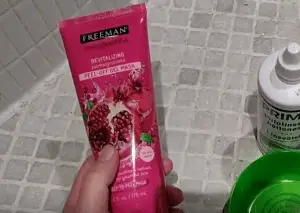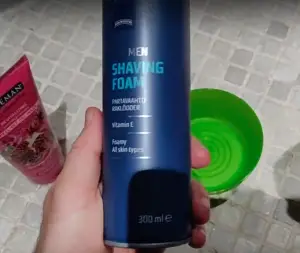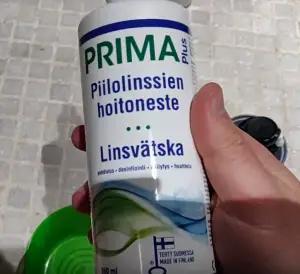Do-it-yourself slime has become increasingly popular amongst young children and even teenagers and some of the used ingredients have left parents concerned about safety. It’s great that kids are interested in chemistry and want to test how different ingredients react so it makes sense encouraging children to go ahead with the hobby. At the same time, we need to instruct children on which ingredients can be safely used and which should not be used.
There are plenty of safe ingredients you can make slime with. Please check the list of safe slime ingredients below.
Dangerous ingredients to be avoided
When children make slime they use their hands during the process and also play with the slime with their hands for prolonged periods of time. So it makes common sense not to use any ingredients with warning labels stating skin irritation or irritation to the eyes. Slime horror stories include burned hands, seizures and visits to the hospital.
As a parent please read the safety labels of the ingredient before giving the green light to your children for using a chemical when making slime.
Borax
There are lots of slime videos on Youtube and some of them use dangerous ingredients like borax. In 2010 the ‘Borate’ group of chemicals that Borax belongs to was classified as potentially hazardous to health by the European Union and consumers can no longer buy it in the EU.
There can be severe symptoms from being exposed to Borax and therefore I highly recommend not using it as an ingredient for DIY slime.
Symptoms of too much borax getting into the body are stomach upset, nausea, vomiting, and diarrhea, rarely headache, lethargy, irritability, and restlessness. The most dramatic evidence of too much borax is skin redness, often called a “boiled lobster” rash.
Missouri Poison Center
Laundry detergent and Dishwasher detergent
Laundry and Dishwasher detergents have strong chemicals intended for cleaning and not meant to go onto your skin or eyes and they have warning labels stating this. Many laundry detergents also have borax in them. Still, there are Youtube videos which are suggesting to use liquid laundry detergent as an activator for glue when making slime.
I highly suggest opting not to use laundry detergent and rather selecting safer activator options.
Safe slime ingredients
Based on my research the safest options for making slime are using food products like yogurt, Nutella, corn starch, baking soda, food coloring, etc.
The safest alternative after food is using products that are meant to be in touch with your skin like shaving foam, peel-off mask and hand cream.
However many recipes call for other ingredients like glue and contact lens solution. Based on my reading many crafts glue brands are non-toxic and therefore you can consider using them in DIY slime projects. The activator ingredient in many slime recipes is contact lens solution and for it to work as an activator it needs to have boric acid in it. Based on my reading the boric acid concentration is so low that most articles I read consider this okay to use in DIY slime projects, but adult supervision is recommended.
Also, it’s advisable to wash hands after playing with slime.
Peel-off Gel Mask

Instead of glue, you can use Peel-off Gel Mask as an ingredient. It needs to be one that shows polyvinyl alcohol as an ingredient. This will react with the boric acid in the contact lens solution to create slime.
The one we tested in the recipe below was the Freeman Peel-off Gel Mask which seemed to work fairly well. We were able to buy it at a local supermarket for less than 5€ for 175ml. Compared to glue this is a bit expensive since you can get 500ml of hobby glue for 3€. According to my daughter, the peel-off gel mask produced a better slime consistency.
Shaving foam

Shaving foam is a really easy ingredient to buy since you can find it pretty much at any supermarket and the inexpensive ones can usually be bought for around 1€.
You don’t really need shaving foam to make slime but it gives the slime a bit of a fluffy and more airy consistency so it’s great fun to add some shaving foam into the mix.
Contact lens solution

The contact lens solution needs to contain boric acid to work as an activator for the glue or the polyvinyl alcohol found in the Peel-off Gel mask. The boric acid is the ingredient that gives me some concern about safety but based on my reading the concentrations are very low and therefore should be quite safe. After all, some of the fluid goes in your eye if you clean your contact lenses with it. Some people do get allergic reactions to contact lens solution so do keep that in mind.
We found the contact lens solution in the local supermarket for less than 6€ for a bottle of 360ml. The brand we used is a local one, but it really doesn’t matter which brand you use as long as it has boric acid to function as an activator.
Simple slime recipe with safe ingredients
A simple slime recipe we tried at home with my daughter contains just three ingredients:
- peel-off mask
- shaving foam
- contact lens solution
You could use also glue instead of the peel-off mask. You need a small bowl and something to mix the ingredients with. Steps to create the slime:
- Add some peel-off mask liquid
- Add shaving foam
- Mix the two ingredients together
- add a small amount of contact lens solution (a teaspoon) to start with
- Mix the ingredients together until it no longer sticks to the bowl, you might need to add small amounts of contact lens solution
- Keep mixing until the slime is no longer too sticky to the hands so that you can start working on it squeezing it in your hands
Optionally you can add some hand cream to make the slime more glossy and it might help also with making it less sticky. Another option is to add some food coloring if you want to make the slime, for example, red or green.
Remember to wash your hands well after playing with slime and store the slime in an airtight box if you want to preserve it for later use.


